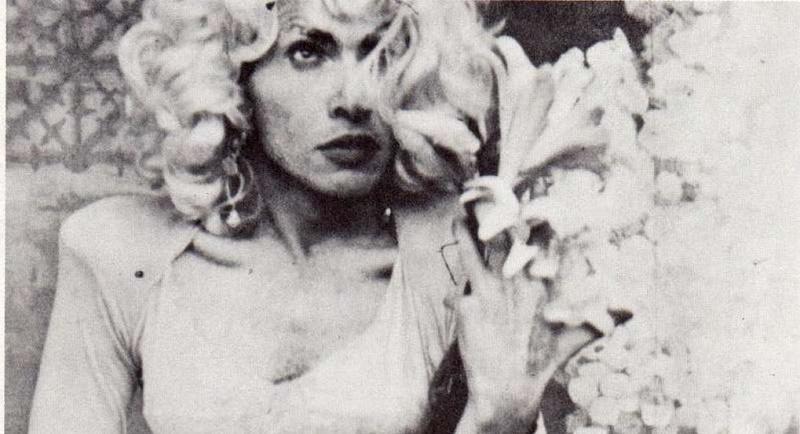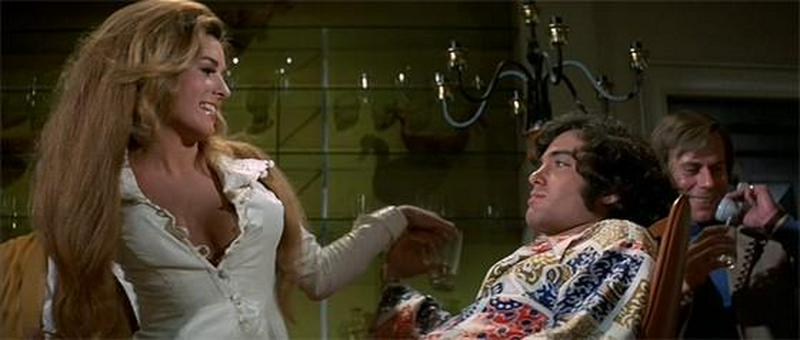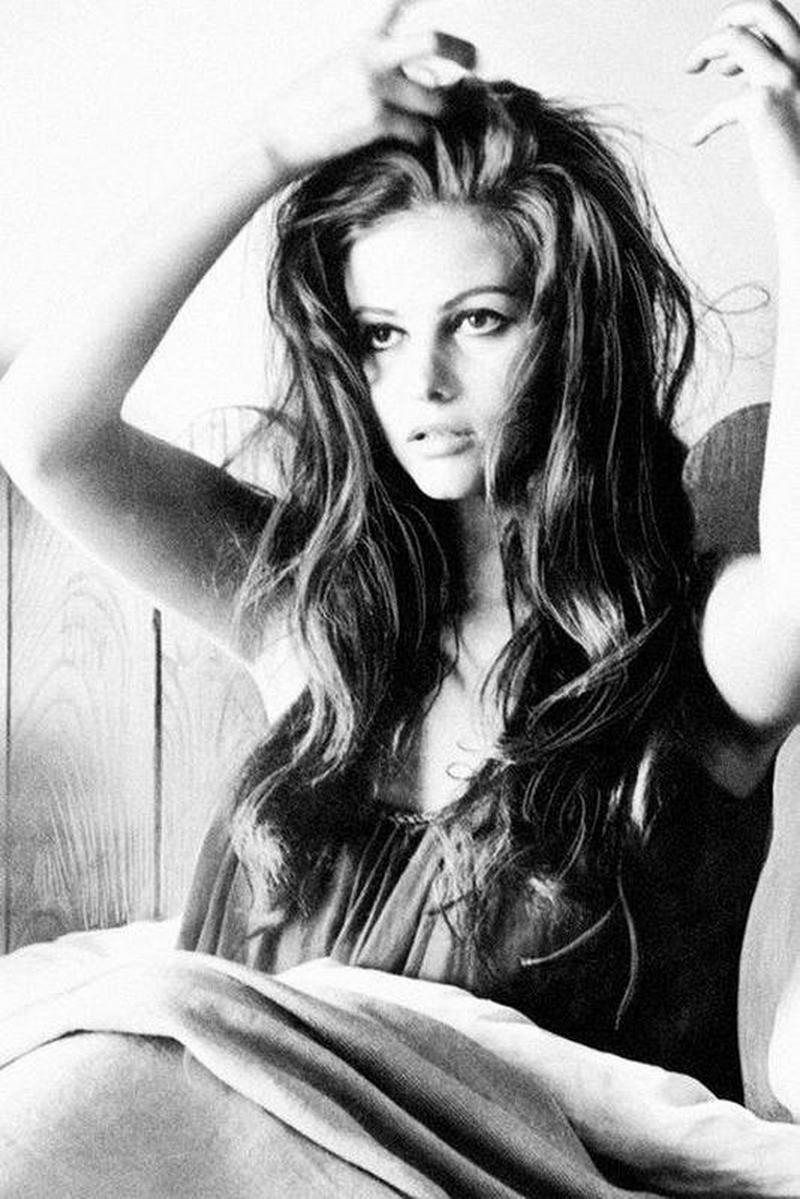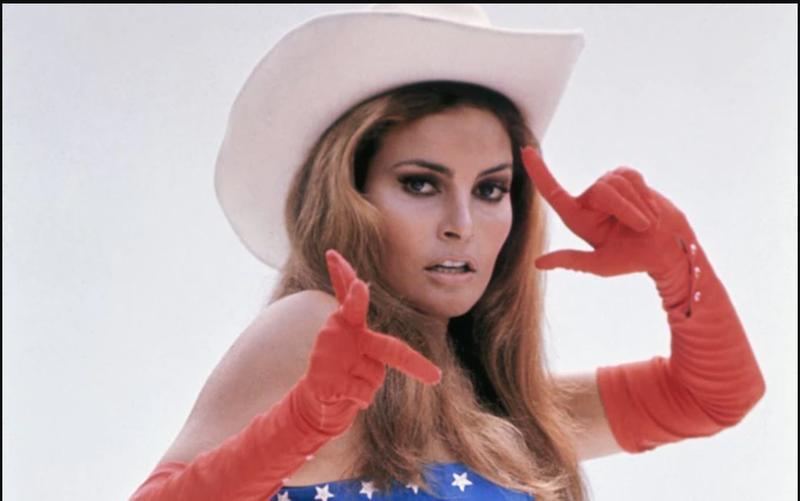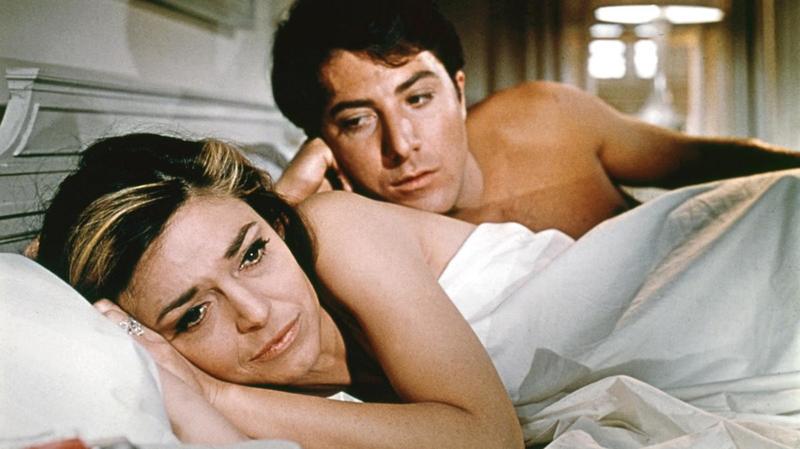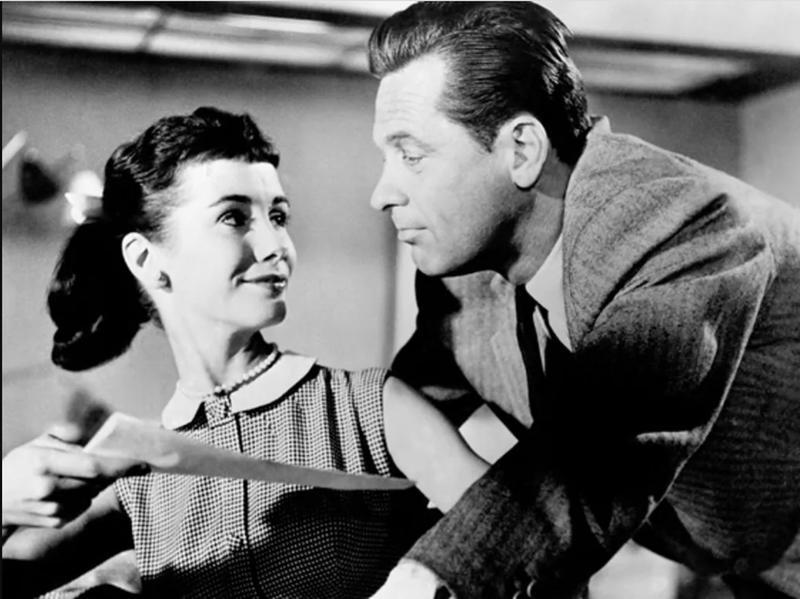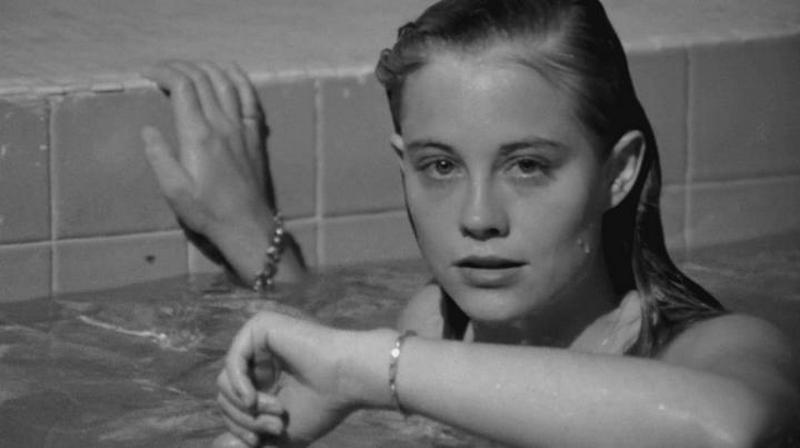Banned Movie Scenes That You Can Never See Again
By | December 13, 2022
No Art Film Shocked Audiences Like 'Flaming Creatures'
Today, hardly a day goes by where there is no controversy or public debate about whether or not various films or other programs have crossed a line of what is acceptable to depict on film. Such debates consume an enormous amount of the public’s collective consciousness, and it seems sometimes that it’s all we ever do. It is easy to forget, however, that such debates are as old as film itself.
Many films over the decades have been controversial for their depictions of various things. Excessive violence, sexual themes, and use of questionable language in films have been magnets for public debate around their suitability to be shown and whether or not they degrade society through their being shown. This list is a journey back in time and an examination of some films from yesterday that fit that description.
Underground artistic films are often breeding grounds for boundary pushing controversy. The pictures 1963 experimental film Flaming Creatures is the absolute picture of this phenomenon. The film is a loosely structured collection of scenes in which most of the characters are dressed in drag. The various scenes are quite graphic, particularly some that have vivid and explicit sexual content. The filmmakers were charged with obscenity and the it was banned, but as a result of this it became a symbol of fighting against such laws and therefore famous as a result.
'Onibaba' Remains One Of The Most Horrifying Films Of The 1960s
Japanese cinema has always pushed the boundaries of conventional films, and has often been collectively a more avant-garde industry than the film industries of other countries. Onibaba, released in 1964, is a good example of this. The film is a period drama about the Samurai wars of medieval Japan, or a Jidaigeki as it is called in Japanese. The film was controversial when released, as it revolves around two women who capture and murder passing Samurai to steal their possessions to sell and survive, but one of the women ends up in a graphic sexual relationship with one of the Samurai they capture.
Sarah Kennedy's Performance In 'The Telephone Book' Was Too Raw For Audiences
(Rosebud Releasing Corporation)
Sarah Kennedy’s performance in the 1971 film The Telephone Book is a prime example of a film controversially pushing the limits of acceptability. The film follows Kennedy, who plays a woman that receives obscene phone calls from various men. The film is an odd sort of comedy, as it features extensive fourth wall breaking and other aspects. It was received very badly at the time, due to its controversial content, but since has become more widely respected and lauded in film circles.
Swedish Actress Britt Ekland Turned Heads in 'The Wicker Man'
Horror films, by their very nature of trying to induce shock and terror in the viewing audience, have long been renowned for their ability to push the limits of what is deemed publicly acceptable on screen. The 1963 British horror movie The Wicker Man was no exception. It follows a missing girl on a remote Scottish island where the inhabitants have turned to ancient Celtic paganism rather than Christianity as the protagonist attempts to resuce the missing the girl, played by the pictured Britt Ekland. The film was lauded (and still is) as a colossus of horror movies.
Before 'Wonder Woman'... Lynda Carter In 'Bobbi Jo and the Outlaw'
(American International Pictures)
Lynda Carter is most famous for her role as Wonder Woman, but it was not her feature film debut. That came a few months after the release of Wonder Woman in the film Bobbie Jo and the Outlaw. It follows Carter as a young, amateur country music singer, who escapes her life as a waitress and joins with Lyle, played by Marjoe Gortner, who fancies himself a modern day Billy the Kid. They are eventually joined by her sister and her boyfriend and embrace a life of crime. The film was notorious for some explicit scenes featuring Carter.
'A Clockwork Orange' Was Pulled From Theaters In The UK By Its Director, Stanley Kubrick
Few directors have achieved the success and fame of Stanley Kubrick. Nearly all of his films have survived in the public imagination as critically acclaimed cult classic masterpieces. On his Mount Rushmore of films is A Clockwork Orange. Based on the novel by Anthony Burgess, it takes place in a dystopian Britain and follows a group of young delinquents who commit heinous acts of violence and rape. It’s popularity amongst young people and thereafter inspiration of copycat acts of violence similar to the film led to Kubrick going as far to request that the film be pulled from theatres in the United Kingdom.
'Beyond the Valley of the Dolls' Brought Exploitation Cinema To The Mainstream
It is common for films viewed as controversial on release to be later appreciated and thereafter developed into cult classics among small but passionate fans. The 1970 film Beyond the Valley of the Dolls stands out as an example of this. The film follows an all-female band, one of whom is an heir to a large fortune, and their navigating the music industry amongst some less-then-upstanding characters they meet. The film was partially written by famed film critic Roger Ebert, and was controversial for its explicit violence and sexual content.
Behind The Scenes With Madeline Kahn and Mel Brooks on 'Blazing Saddles' (1974)
Few comedy films have pushed the limits and maintained an absolutely iconic status in the way Mel Brook’s 1974 comedy Blazing Saddles has. The film has endured as a pillar of the comedy film genre ever since it’s release. It was thought to be controversial due to its crude use of language for jokes, particularly racial humor. During production, Brooks even said to the writers “Write anything you want because we’ll never be heard from again. We’ll all be arrested for this movie”. Ultimately, however Blazing Saddles was a massive success and has become an American classic.
Natalie Wood Gets A Little Too Groovy In 'Bob & Carol & Ted & Alice'
Controversial films often earn that distinction by examining concepts that are very much against societal norms. This picture shows Natalie Wood in the 1969 film Bob & Carol & Ted & Alice, a picture that very much fits that bill. The film follows two couples, one of which rationalizes and begins to take part in extra-marital affairs. Eventually, the other couple comes around to the idea and the two couples switch partners, with some explicit scenes depicting it as such. Ultimately, the characters end up rejecting the idea and move on from it.
'Caligula'... The First Erotic Epic From Penthouse
(Analysis Film Releasing Corporation)
Ancient Rome has long been a subject depicted on film to popular acclaim. However, few films did so as controversially and explicitly as 1979’s Caligula. The story follows the infamous Roman emperor Caligula, often regarded as one of the most brutal and unhinged historical figures. The film depicts the violence and sex of Caligula’s court in uncensored, explicit detail. The latter part of it’s depiction made it groundbreakingly controversial and famous, although it did not add up to making the film a compelling watch, as it was poorly reviewed.
Elizabeth Montgomery as the lead character in 'The Legend of Lizzie Borden' (1975)
(CBS Television Distribution)
Murder mysteries are a genre whose popularity has remained consistent throughout the generations. Tales of murder often lend themselves to questions about ethics, revenge, justifiable violence, psychology, and so on, and can often be controversial in how they ask these questions as well as being quite explicit. The 1975 film The Legend of Lizzie Borden was an example of this. The film follows a still unsolved murder from the 1890’s in New England. The prime suspect was played by Elizabeth Montgomery, who was depicted committing the murders in the film while in the nude, which was censored for American viewers.
Girl Power in 'Faster, Pussycat Kill! Kill!'
Some films that are viewed as distastefully controversial commentary in their time come to be greatly appreciated in retrospect. This is true of Faster, Pussycat! Kill! Kill!, released in 1965. The film follows three female go-go dancers who plot to steal the buried hidden fortune of an old insane man who is protected by his young dim-witted son. The film has some very graphic scenes of violence, but was retrospectively acclaimed for it’s central premise of three independent female characters driving the plot.
Jamie Lee Curtis As The Ultimate Final Girl In 'Halloween'
Halloween has long been a cliché setting within which to set a horror film. The apex of this notion is the 1978 classic Halloween starring Jamie Lee Curtis, as this picture shows, in her film debut, and others such as Michael Meyers. The film is lauded as a classic of the horror genre and was even selected by the Library of Congress as being worthy of special preservation. It was controversial at the time due to the sexual themes in the film, but has stood the test of time as being one of the better horror films ever made.
"Marriage functions best when both partners remain somewhat unmarried." -Italian actress Claudia Cardinale, 1966
The behavior of celebrities has always been a cause for public debate and controversy on ethics and personal decisions due to the fact celebrity behavior is covered by tabloids and is always in the public eye. The public often loves nothing more than they do a celebrity scandal, particularly one regarding an affair. Sometimes, controversial statements on subjects like this from celebrities become hot button subjects of debate. This quote by the pictured actress Claudia Cardinale, justifying infidelity, is a great example thereof.
'Monty Python and the Holy Grail' (1975)
Comedy and senses of humor change from generation to generation: often, something one generation finds hysterical will be found to be utterly boring by the next. Some films, however, stand the test of time and become classics of comedy. Monty Python and the Holy Grail is one such film that has never gone out of fashion. The film follows parodies of King Arthur and his court trying to find the illusive holy grail, and their adventures along the way. Since it’s release, it has secured a place on the Mount Rushmore of all-time comedies, but remains controversial to some due to it’s language and themes and the subjects it mocks.
Raquel Welch Courts Controversy In 'Myra Breckinridge'
Gore Vidal was one of the most controversial and hot topic authors in American literature during the 20th century, and the films based on his novels inherited this. The 1970 comedy Myra Breckinridge was no exception. The film was immensely controversial for its depiction of highly explicit sexual content including rape, as well as its depiction and commentary on transgender issues. Although the novel was critically acclaimed, the film was largely regarded even outside of it’s controversial aspects as being a poorly made one.
Is 'Possession' The Scariest Movie of All Time?
European films have often taken more risks as far as addressing and portraying controversial topics or content than the American film industry has, and the pictured 1981 film Possession is no exception to this trend. Possession is a rather bizarre but well reviewed horror film that follows a woman who abruptly demands a divorce from her husband, who is a spy involved in the cold war in Berlin. It becomes increasingly more bizarre and horrific as the husband tries to figure out what her motives are and has many graphic horror, violent, and sexual scenes that made it quite controversial.
PJ Soles, Joey Ramone Goofing Around in between scenes in 'Rock N Roll High School'
Music and what types of it are popular are often the most vivid, memorable and defining aspects of what separates different generations. The differences between generations and teenage or youth culture is a subject that many films have examined through the lens of music. This picture shows PJ Soles and Joey Ramone on the set of one such film, 1979’s Rock 'n' Roll High School. The film depicted late 1970’s and early 1980’s youth culture through the lens of contemporary music and touches heavily on young people versus established authority and other topics.
Peter Fonda Courts The Counter Culture in 'The Trip'
(American International Pictures)
The counter-culture movement of the mid to late 1960’s generated no shortage of controversy. The use of psychedelic drugs such as LSD by the counter-cultural community was emblematic of this. The above pictured appropriately titled 1967 film The Trip examined the use of LSD and its effects. Written by the legendary Jack Nicholson and starring Peter Fonda, the film was immensely popular and well received for it’s depiction of the drug but quite controversial when it was released due to the fact it explored and promoted the drug at all. '
Brooke Shields as a 12-Year-Old Prostitute In 'Pretty Baby'
It is a universally held principle that child exploitation and prostitution is among the most heinous and despicable of crimes, if not the most. The depiction of child prostitution in the 1978 film Pretty Baby, starring Brooke Shields as a 14-year-old prostitute, is for this reason one of the most controversial films ever made. The film depicts Shields as a young prostitute in early 20th century New Orleans explicitly, and it is not difficult to see why this film is viewed as nigh child pornography and slammed as such. Shields has stated she has no issue with the film, but it is still viewed in a negative light.
Audiences Are Still Scandalized By 'The Rocky Horror Picture Show'
The Rocky Horror Picture Show is an example of a film that was controversial upon it’s release, but as social norms and standards have changed, has been re-examined as is now viewed retrospectively as a classic of the genre. The film is a bizarre horror-musical comedy mix that largely is a parody of the old-fashioned science fiction films of the 1930’s and 40’s, and deals with themes of sexuality and androgyny. In 2005, it was selected as worthy of special preservation by the library of congress due to it’s eventual status as a cult classic.
Sybil Danning Stuns In 'Chained Heat'
Prison films and shows are an excellent way to examine the themes of authority, power, punishment, and exploitation. The setting of a prison and its straightforward hierarchy lends itself to such discussions. The 1983 pictured film Chained Heat examined these topics in the context of a women’s prison. It was controversial due to its depiction of sexual exploitation, drugs, and inter-prisoner race relations. It came under particular fire from lesbian activists, who felt it was far too stereotypical in its depictions.
The Graduate Shocked Audiences With Its Winter-Summer Romance
This picture shows Dustin Hoffmann and Anne Bancroft in the 1967 film The Graduate. The Graduate is widely considered one of the greatest American films ever made, but it’s immense acclaim and success upon release was not universal, as the plot was controversial. It follows Hoffman, who plays an uncertain college graduate, who begins an affair with an older married women but ultimately falls for her daughter instead. In the end, he runs off married with the daughter, and it ends with them questioning their impulsive decision. In later decades, the controversy around it has shifted more so towards viewing Bancroft’s character as predatory, but it is still lauded as a classic.
'99 Women' Earned An Early X-Rating
(Commonwealth United Entertainment)
The above pictured and highly controversial film 99 Women is another example of how prison, especially women in prison can be used as a lens to examine the themes of hierarchy, sexuality, and so forth. 99 Women contained some very explicit sexual scenes to this end. However, unlike Chained Heat, the film was not well regarded, as it was viewed as explicit to no real end or purpose and although it achieved some financial success, it has none been particularly well remembered or preserved.
Jane Fonda Stuns In 'Barbarella'
1968’s Barbarella has endured as an example of a science fiction film, a genre that exploded in popularity during the late 1960’s and into the 1970’s and 1980’s, that has a female in the lead role. It follows the controversial actress Jane Fonda as an agent of earth who travels to another planet with the purpose of hunting down a villain with a weapon that could destroy the earth. The film garnered some controversy due to Fonda’s own controversial political positions and activism, as well as some of the sexual elements depicted in it. It was mildly successful, mostly in the United Kingdom.
'Bicycle Thieves' Earned Condemnation For a Few Shocking Scenes
(Ente Nazionale Industrie Cinematografiche)
The Italian film industry has long punched above its weight in its export of critically acclaimed and controversial films. Its film industry is much more willing to take risks and push the limits of acceptability. Bicycle Thieves, released in 1948, is one such film. It is a neorealist film about a man who loses his bicycle that he needs to keep his job to support his family in the ruins of post war Italy. The cast was entirely first-time actors to make it as authentic as possible. It was controversial for its depiction of Italians and some graphic scenes but is in general lauded as one of the most influential films ever made for its impact on other directors.
'Black Sunday' Remains A Shocking Piece of Italian Horror
Witches and other traditional elements of folklore have long served as inspiration for horror films. The 1960 Italian horror picture Black Sunday tells the tale of a 17th century Moldavian witch who curses the descendants of her executioners and comes back to life centuries later. The film was controversial due to extremely graphic sexual and violence-based scenes. However, it is considered a pillar and foundational element of Italian gothic horror films and as such is remembered in high regard due it’s influence on future films.
Faye Dunaway Brings The Heat to the Very Bloody 'Bonnie and Clyde'
Some films that are controversial in their time go on to open the proverbial gates for other films. The 1967 classic Bonnie and Clyde is emblematic of this process. The film follows the famed outlaws Bonnie and Clyde and their lives of crime and violence. It features several explicitly sexual themes and other scenes that have extensive and extremely graphic violence. The ending death scene became particularly infamous for its graphic nature. However, the success of the film showed studios films could be graphic and still successful.
'Cannibal Holocaust' is One Of the Few Horror Films That Was Actually Put On Trial
(United Artists Entertainment)
Some films create and innovate a new style of filmmaking that makes them standout. The 1980 Italian film Cannibal Holocaust was the first major “found footage” film, that is essentially a film that seems as though it is discovered firsthand documentary footage. The film was incredibly controversial due it’s depictions of cannibalism, violence towards animals, and sexual assault. It was banned in Italy and the director was charged with obscenity. It has developed a following due to its innovative concept and the found footage style later gained fame in films such as The Blair Witch Project.
Pam Grier Is Truly Mighty In 'Coffy'
(American International Pictures)
The civil rights movement of the 1960’s led to a boom in films that focused on black protagonists and commented on race relations. The 1973 film Coffy, starting the pictured Pam Grier, follows Grier as a nurse by day but vigilante by night trying to track down and kill the drug dealers responsible for getting her sister fatally hooked on drugs. She lures the drug dealers in by posing as a prostitute. The film was quite violent and explicit, and paved the way for more films to be made about black protagonists as it was quite successful.
Al Pacino's Turn As A Gay Hustler In 'Cruising' Made LGBTQ Audiences Furious
The latter half of the 20th century and increasing awareness and openness around LGBTQ issues opened up the possibility for films to be made about it. The 1980 film Cruising, starring the above pictured Al Pacino, follows a cop who goes undercover into New York City’s gay subculture to try and find a serial killer who has been murdering gay man. The film saw some success, but was heavily protested by the gay community for what was felt to be demeaning and stereotypical depictions
'The Deer Hunter' Showed The Brutality Of The Vietnam War
The Vietnam war, notorious for its brutality and horror, has been the subject of an immense number of films that seek to comment on war and the psychological effects of it. Few achieve this as deeply and transfixingly as 1978’s The Deer Hunter. It follows the experience of three soldiers captured by North Vietnam who are forced to play Russian roulette for the entertainment of their captors. Although successful and acclaimed, it was immensely controversial for it’s depiction of the North Vietnamese and the United States’ role in the war.
The Violence Of 'Django' Turned the Western Genre Upside Down
(Euro International Films)
Before Quentin Tarantino’s western epic Django Unchained, there was the earlier inspiration for it, the 1966 Italian spaghetti western Django. Whereas many westerns prior and after it are typically slower paced dramas that ultimately center around climactic action scenes (such as A Fistful of Dollars), Django was regarded as an immensely violent film upon it’s release and was not shown in some places and countries that found said aspects excessive. However, it became a cult classic and quite obviously was the main inspiration for Tarantino’s later re-adaptation of the story.
'The Evil Dead' Made Audiences Run From Theaters
Audiences typically attend and enjoy horror films for the purpose of the adrenaline rush the horror evokes. However, some horror movies have become notorious for instilling such terror in the viewer that they are unable to finish watching them. 1981’s The Evil Dead is one such picture. Originally an independent short film, it later was picked up and turned into a feature length movie. It was controversial due it’s extremely graphic violent scenes but became a cult classic and is widely regarded as one of the greatest horrors ever made.
'Flesh For Frankenstein' Faced Controversial Edits In Multiple Countries
Mary Shelley’s 1818 novel Frankenstein has been adapted to film time after time. The story is a classic that has resonated with generations of audiences. All the adaptations have taken some creative liberties, but none to the extent of 1973’s Flesh for Frankenstein. The adaptation, originally titled Andy Warhol's Frankenstein was wildly controversial and given an X rating for its extremely graphic sexual content and jarring violence. It was praised by counter-culture inclined fans of Andy Warhol, who had some small involvement, but others found it to be a poor film.
Ed Wood's 'Glen Or Glenda' Remains Shocking To This Day
Some movies become much loved in retrospect due to being ahead of their time in terms of their social and cultural commentary. The 1953 film Glen or Glenda is the poster child for such a film. The film is about cross-dressing, transgenderism, and homosexuality. It follows a World War II veteran who eventually gets a sex change operation At the time of it’s release, it was given poor reviews and regarded as a terrible film. However, it’s ahead of it’s time commentary on aforementioned issues has led to it becoming critically acclaimed and newly appreciated in recent years.
'John Goldfarb, Please Come Home!' Faced A Lawsuit For Bringing "Immeasurable Damage" To Notre Dame
Institutions making a large fuss about movies portraying them in a light that is less than favorable is far from a purely modern phenomenon. John Goldfarb, Please Come Home!, made in 1963, was sued by the University of Notre Dame for it’s depiction of the university. It follows a downed Air Force pilot in an Arab country who is an ex-college football star. The fictional country stages an exhibition game against the fighting Irish with the downed pilot on their team. Notre Dame felt they were being put in a bad light and sued to block the release of the film, albeit unsuccessfully.
'I Am Curious (Yellow)' Faced Censorship At Every Turn For Its Shocking Show Of Skin
The sexual revolution of the 1960’s led to an explosion of films, particularly in Europe, that examined the subject. To this end, in 1967 the pictured I Am Curious (Yellow) was released out of Sweden. The film garnered immense controversy due to the explicit sexual content therein and was originally censored upon release in the United States. However, courts found it not to be obscene and it was released. Famous late night host Johnny Carson went to see the film and liked it, which legitimized the film as not obscene throughout the country.
'I Spit On Your Grave' Is Too Intense For Audiences To This Day
(The Jerry Gross Organization)
Some films that depict violence in excess do so to achieve a certain plot or cinematic effect. However, some films can take it over the top to no real end. This was the case with the 1978 film I Spit on Your Grave. It follows Camille Keaton playing a victim of rape who seeks revenge on her rapists. The film shows her brutal rape and her exacting this revenge in incredibly graphic and horrifying detail. Many countries banned it, and others gave it at best an X rating. Many critics panned it as an awful movie and it did not achieve great success.
'Last Tango in Paris' Created International Controversy Upon Its Release
Marlon Brando, widely viewed as one of the greatest actors of all-time, was no stranger to public controversy. Perhaps the apex of him in that context was his participation in the 1972 film Last Tango in Paris, which follows Brando as an American expat in France having an affair with a much younger French woman, he is renting the same apartment as. The film was controversial for a scene wherein Brando’s character rapes the younger woman, and it was given an X-rating. The actress who played the woman, Maria Schneider, has condemned the film and said she was pressured and misled into doing the scene. The film remains immensely controversial to this day.
The Religious Text In 'Life of Brian' Set Off Alarm Bells Across The World
(Cinema International Corporation)
Religion and critiquing it has always been a hot button issue in society. Films that mock or poke fun at it have often found themselves at the center of controversy. The 1979 Monty Python film Life of Brian was one such film. It poked fun at Christianity by following the main character, Brian, who is mistaken for Jesus and the messiah during the life of Christ. The film’s mocking of Christianity was extremely controversial and a number of countries, including Norway, Ireland and Italy, banned the film.
Sue Lyon Made Audiences Salivate In 'Lolita'
The career of the legendary director Stanley Kubrick was far from controversy free, ranging from A Clockwork Orange to Eyes Wide Shut. One of his earlier films, however, was also a lightning rod for debate. The film Lolita follows a middle-aged man who becomes infatuated with a young girl, played by the pictured Sue Lyon. The obvious controversy arose from the age gap between the two characters, and it was greatly censored even after the novel the film was based on was toned down for the script. The film was ultimately well reviewed but still controversial.
'Midnight Cowboy' Is The Only X-Rated Film To Win an Academy Award
Only once has a controversial, X-rated film won an academy award: Midnight Cowboy. The above pictured Jon Voight played an aspiring male prostitute and the film’s plot revolves around him making his way through the seedy world of prostitution and his interactions with various pimps and clients. It explores various themes of masculinity and sexual orientation and portrays it all in explicit detail. The film was controversial for it’s explicit sexual imagery but was thought of highly enough in terms of it’s cinematic value to earn the aforementioned award.
The Brutality Of 'Peeping Tom' Shocked British Audiences in 1960
(Anglo-Amalgamated Film Distributors)
The 1960 film Peeping Tom was thought of as a horrible film at the time, but is an example of a film that became beloved in retrospect and extremely influential on other films. It follows a serial killer who murders young women and uses a camera to record his actions, played by Carl Boehm. It was controversial due it’s graphic violence, but the camerawork techniques and exploration of dark psychological themes let to it be re-appreciated in retrospect and influential to future “slasher” films.
Divine Still Shocks Audiences With the Final Scene of 'Pink Flamingos'
Some films invite great controversy and anger by depicting absurd degrees of graphic excess on screen. This is certainly true of the 1972 cult classic Pink Flamingos. It follows a drag queen who makes it her express goal to be as “filthy as possible”. She engages in a wide variety of increasingly outrageous acts, ranging from incest to murder to cannibalism and so on. It ends with a revolting scene wherein she consumes dog feces. The film is considered an example of abject art, where art is detached from social norms.
Jayne Mansfield Stars In 'Promises! Promises!' The First Hollywood Film To Feature A Star In The Buff
The 1963 comedy film Promises! Promises! featuring Jayne Mansfield achieved notoriety and controversy as it was the first film of the sound era with a mainstream Hollywood star being nude on screen. It follows a marrier couple that switches spouses with another on a cruise ship in an effort to have a baby and ends with the two wives trying to figure out who the father of their new babies are. The film was ultimately only famous or known because it was the first to feature a famous nude actress and was not reviewed well.
Jack Nicholson Goes Full Hippie in 'Psych-Out'
(American International Pictures)
Jack Nicholson has been a mainstay of American cinema for decades and has achieved iconic status as a dynamic and superbly talented actor. Nicholson came of age as an actor during the counter-cultural years of the 1960’s and the film Psych-Out depicts the changing norms and culture of that era. It follows a group of hippies who engage in psychedelic drugs and all the other associated activities of hippies during the 60’s, all in vividly explicit detail. Ultimately, the film is meant to have an anti-drug message and does well reasonably well.
'Salò, or the 120 Days of Sodom' Remains A Brutal Viewing
The 1975 Italian artistic horror film Salò, or the 120 Days of Sodom is one of the absolute most brutal films ever made. It follows four despicable powerful men in the Salo Republic of Italy, the name of the puppet state Nazi Germany established following Mussolini’s downfall, who have extremely sadistic inclinations. They kidnap several young people and force them to engage in a wide variety of sadistic sexual acts. The film was reviewed as nearly impossible to watch but nonetheless of cinematic value as it explored themes of power, sadism, fascism, and more.
Sam Peckinpah's 'Straw Dogs' Turned Audiences Off With Its Intense Sexuality and Violence
(Cinerama Releasing Corporation)
Any film that depicts rape is bound to invite controversy for obvious reasons. This is naturally the case with the film Straw Dogs, released in 1971 and starring the above pictured Dustin Hoffman and Susan George. It follows a young couple that moves to the rural area of Cornwall in southwest England. A series of events escalates to the point that George’s character is brutally raped by two locals. The film was a lightning rod for criticism and controversy due to the rape scene, and director Sam Peckinpah was heavily criticized for his portrayal and alleged glamorization of rape.
No Film Shocks As Much As 'The Texas Chainsaw Massacre'
(Bryanston Distributing Company)
Some movies achieve such a cult status in popular culture that their mere name and plot is universally known. The plot revolves around a group of friends who are captured by a group of cannibals in Texas. Although the excessive violence resulted in some censorship and bans in various places, the film was an enormous success. It grossed an incredible amount of money and spawned a number of sequels and ingratiated itself into pop culture, and is regarded as one of the greatest horrors of all time.
'The Devils' Was Built To Stir Controversy
Of all the movies that have garnered controversy and have been thereafter censored or banned, few have done so at the level of the 1971 Ken Russell production The Devil. The film takes place in France during the era of Cardinal Richelieu and The Three Musketeers stories and follows an immoral priest and nuns who are alleged to be witches. The film is packed with unbelievably graphic violent, sexual, and sacrilegious content. It was not given good reviews and is viewed as among the most controversial films ever made. To this day, finding a full copy is difficult.
'The Exorcist' Convinced Audiences That The Devil Wanted Their Souls
One movie quote that has entered our collective cultural lexicon like few others is the renowned line from the 1973’s The Exorcist: “The power of Christ compels you”, spoke during the scene the title is derived from. The Exorcist is based off a book and follows a young girl who is possessed and the efforts of priests to exorcise her. The film achieved classic status and is one of the greatest and most successful horror movies of all time. It has inspired several sequels and become universally known.
The MPAA Hated 'The Moon is Blue'
The 1950’s was a time of strict cultural conformity and frowned upon controversy and movies pushing the limits of social acceptability. For this reason, the 1953 movie The Moon is Blue was a controversial one. It follows a young unmarried woman who goes to the apartment of two older playboy men. They are disappointed when their efforts to win her over fail as she much prefers to discuss the hot button cultural issues around sexuality of the day. The discussion of these topics on film made it a controversial release.
Marlon Brando In 'The Wild One'
Marlon Brando was an actor who achieved what almost all actors strive for: he ascended to the status of a cultural icon. Key to his ascendancy to this status was the 1953 film The Wild One. Brando portrayed the character of Johnny Strabler, a biker gang criminal, which became one of his most iconic roles in his long and storied career. It’s depiction of youthful crime and rebellion led to it being banned in the UK until 1967, over a decade after it’s release. The film has stayed relevant for it’s sheer cultural status.
Cybill Shepherd Turned Heads In 'The Last Picture Show'
The counterculture and post counter-culture years of the late 1960’s and 70’s led to movies and other art taking a more critical look at the decades that came before, such as the 1950’s, when explicit films were far more taboo. An example of this is the 1971 teenage coming of age drama The Last Picture Show. The film followed a group of high schoolers in Texas during the early 1950’s and the latter stages of their teenage years. It generated some controversy due to it’s sexual content, but overall, is regarded as an excellent film that portrays the slings and arrows of adolescence well. Famed critic Roger Ebert even named it the best movie of 1971.
'The Wild Angels' Brought Biker Hedonism To The Big Screen
(American International Pictures)
Along the lines of The Wild One, the 1966 movie The Wild Angels is a classic of the biker criminal genre. The film, starring most notably Nancy Sinatra and Peter Fonda, follows a biker gang called the “Angels” and their criminal and debauched behavior in southern California. The film is loosely based on the notorious activities of the Hell’s Angels during that time. It was controversial among some for it’s romanticization of the counterculture and was not overly successful, though it greatly boosted Fonda’s career.
'Titicut Follies' Exposed The Horrific Conditions In Mental Hospitals... and Was Condemned For Doing So
Often times, governments are far more interested in trying to censor documentaries directly investigating societal issues than they are in doing so with provocative films. Titicut Follies was a documentary that was released in 1967 that investigated and shed light on a mental hospital in Bridgewater, Massachusetts. Frederick Wiseman produced and directed the film, and it exposed the awful conditions of the facility. The state of Massachusetts went to great lengths to block its release, stating that it violated the inmates right to privacy. It was not until 1992 that it was publicly shown on PBS.
Disney's 'The Vanishing Prairie' Got Almost Became Extinct Thanks To The Censorship Board
(Buena Vista Film Distribution)
The Vanishing Prairie was a documentary made by Walt Disney in the 1950’s that documented the decline of the great plains and vast prairies of the American west, focusing on the increasing extinction threats to much of the wildlife there. It showed unvarnished footage of the animals such as the buffalo, including a scene where a buffalo gave birth. This was considered obscene by the authorities and thus it was originally censored in the state of New York. The film became a lasting pillar of the Disney documentary collection.
The Focus On Homosexuality In 'Victim' Made It A Target Of Censorship Boards In the US and the UK
The 1960’s saw the beginning of a major societal shift in how homosexuality was viewed. Few films embodied this better than the 1961 British movie Victim. The plot is centered around a highly successful barrister (or lawyer as he would be called in the U.S.) who has a relationship with another man. The other man is blackmailed about his sexuality and commits suicide. Eventually, the barrister decides to ruin his career rather than give in. The film was initially censored but has been praised for it’s sympathetic portrayal of gay characters since.
Brigitte Bardot and Jeanne Moreau Get Revolutionary in 'Viva Maria!'
The cold war in the first few decades after the second world war led to a consistently less than friendly attitude towards Latin American revolutionaries, which in the political context of the time evoked images of Fidel Castro and Che Guvera, among others. For this reason, the 1965 comedy Viva Maria! starring famed actresses Brigitte Bardot and Jeanne Moreau, both playing characters named Maria, aroused controversy upon release. It follows the two as Latin American women in the 19th century caught up in a revolution in south America.
'The Wild Bunch' Proved To Be Too Bloody For Censors
Most western films, particularly from the 1960’s and surrounding eras, often glossed over the brutality of the old west and depicted it in a very romanticized fashion. This cannot be said of the 1969 Sam Peckinpah movie The Wild Bunch. It is centered around a gang of outlaws on the U.S.-Mexico border and their attempts to survive. Their lives and journey and the violence surrounding it are shown in very graphic detail, unlike other westerns. For these reasons, the film is retrospectively viewed as one of the greatest westerns ever made.
Charles Bronson Stars In 'Death Wish,' A Film That Critics Felt Went Too Far
The crime wave of the late 1960’s made the issue a highly salient one in the public eye. As such, films addressing the issue became popular. Few achieved as much success as 1974’s Death Wish starring Paul Bronson. It follows a man whose wife and daughter are murdered on their way home by criminals. Bronson’s character embraces vigilante justice and hunts down criminals to kill them. The film was controversial for its violence but was highly successful.
